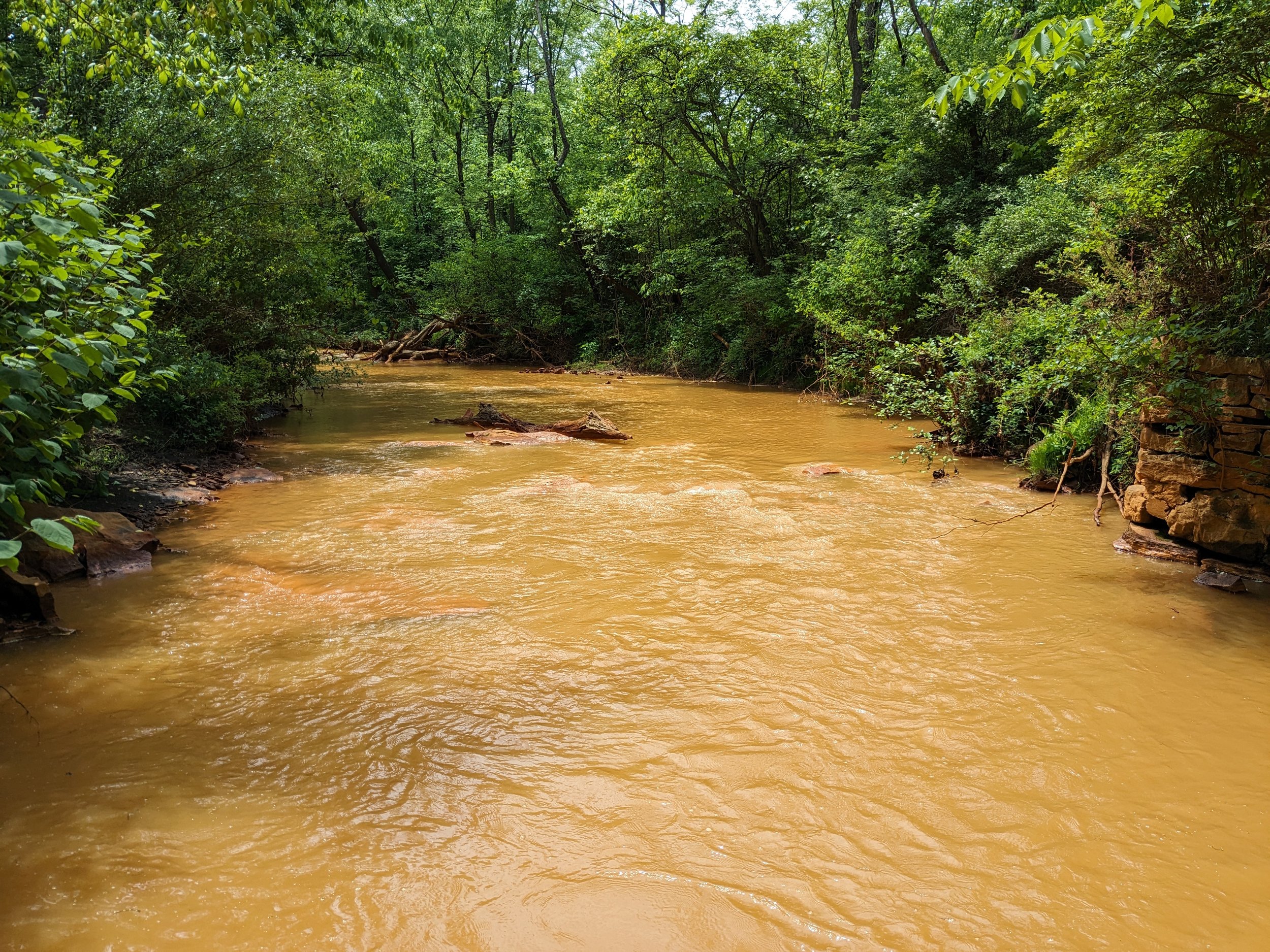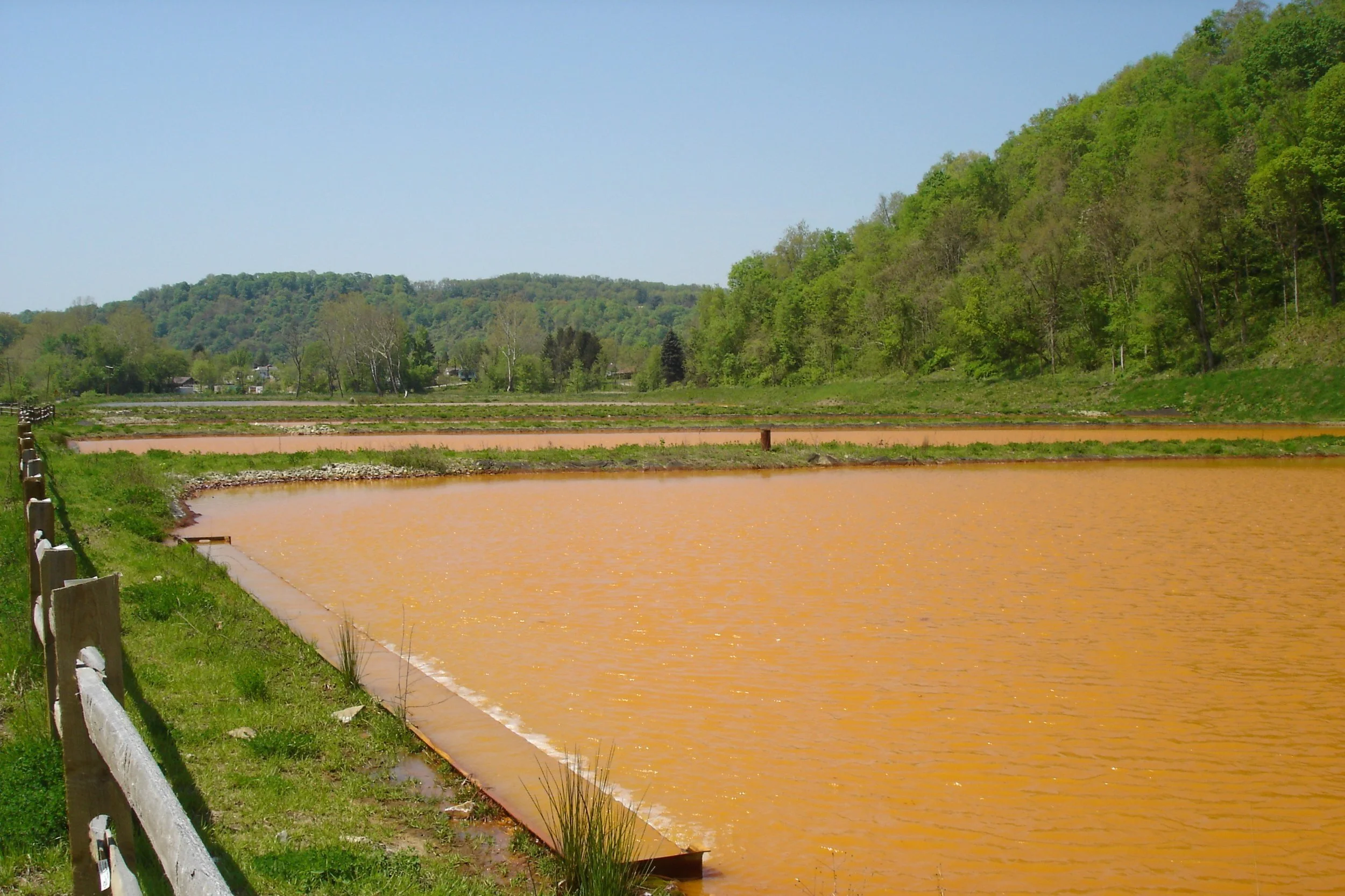
Passive Treatment
Water Characterization
The critical first step in designing a successful passive treatment system is characterizing a discharge. The discharge must be monitored for flow rates and chemistry under a range of flow regimes and seasons. The type of passive treatment technology depends on the chemistry of the water and the size of the technology depends on the flow rate. The flow chart below (Hedin et al 2013) is used to determine the appropriate passive technology.
Learn More About How We Determine the Appropriate Passive Technology
Ponds and Wetlands
Ponds and wetlands are used to settle solids from net alkaline water or after alkalinity generation. Ponds should aerate the water for Fe oxidation, distribute water to limit short circuiting, and be sized for an appropriate retention time and sludge accumulation volume. Wetlands are used to polish water after a bulk of the solids have been settled in a pond.
Anoxic Limestone Drains (ALDs)
ALDs are buried beds of limestone that are used to generate alkalinity in an anoxic environment. ALDs are used when alkalinity generation is required, but there is little to no chance of metal accumulation in an anoxic environment. ALDs are typically for net acidic water with low concentrations of Fe+3 and Al. ALDs discharge a pond/series of ponds for aeration and metal removal. ALDs are the least expensive way to generate alkalinity for mine water and typically do not require maintenance for decades.
Vertical Flow Ponds (VFPs)
VFPs are layered basins with limestone on the bottom, overlain by compost, overlain by a water cap. VFPs are used when alkalinity generation is required, but there is a good chance of metal accumulation in the alkalinity generation unit. VFPs are typically for net acidic water with Fe+3 and/or Al. The compost is used as both an energy source for microbial respiration to remove dissolved oxygen and as a sacrificial layer for Fe+3 and Al accumulation. This keeps the limestone layer, which dissolves to generate alkalinity, clean. VFPs discharge to a pond/series of ponds and wetlands for aeration and metal and nutrient removal. The compost layer should be replaced about every 8 years.
Oxic Limestone Bed (OLBs)
OLBs are limestone beds that are open to the atmosphere. OLDs are used when alkalinity generation is required, but there is a good chance of Al and Mn accumulation in the alkalinity generation unit. OLBs are typically for net acidic water with Al and low concentrations of Fe+3. OLBs are commonly equipped with solar powered and computer controlled hardware to flush the bed empty once per week. This flushing removes Al solids that accumulate in the limestone bed. The main advantage of an OLB is that it produces clean water which does not require polishing and can be discharged directly into a stream. The limestone layer requires maintenance about every 5 years.
Aggregate Bed for Mn Removal
Mn is commonly the last pollutant remaining in partially treated mine water and is not removed in ALDs, VFPs, ponds, or wetlands. An aggregate bed is a pond filled with crushed stone that is open to the atmosphere. They are used after Fe and Al and acidity are removed and Mn is the final contaminant. Mn removal is a surface process involving microbes and aggregate provides that surface.
Maintenance
While passive treatment systems do not require consistent chemical, electrical, and labor costs, necessary for chemical treatment systems, they do require maintenance. This maintenance is often infrequent (e.g. every 5 to 20 years) and usually can be completed for an entire site and/or treatment cell in one effort (minimizing mobilization costs). Maintenance generally involves removing AMD solids that have accumulated in treatment cells (e.g. pumping iron oxide from ponds), cleaning limestone, and/or replacing reagents (e.g. limestone or compost).

























